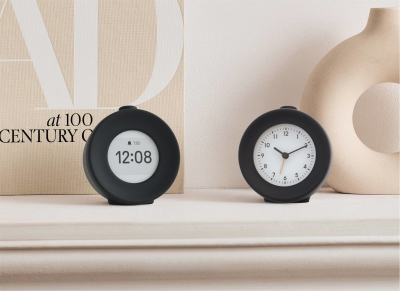
Technology Non-Use, a Perspective Worth Considering.
This is the second article in the blog series of our guest writer, Jadelin Pikake Felipe. She writes about her research on college students intentionally unplugging from cell phones. In her first post she introduced readers to a minority group she calls The Unplugged.
In this article, the concept of voluntary technology non-users is introduced as a framework to further understand the perspectives of temporary non-users like The Unplugged and validates what we can learn from the absence of objects such as our phones, a perspective worth considering.
Likes long walks on the beach. A ninja at cooking yummy meals with kale. Lawyer by day and dance enthusiast by night.
A voluntary technology non-user.
Now that would make an interesting dating app profile.
You’d have my interest up until the last “pitch” but I’m not so sure about the technology non-user part (and yes, I do like kale and–I know–so San Francisco of me)!
Voluntary technology non-user? It’s not a term we commonly hear and at first glance it leaves one not so sure what it even means. Take another pass at it, read it slowly, and it’s exactly what the words say they are: a person who voluntarily chooses not to use technology.[1] The choice to not use technology or phones could be a temporary or long-term decision.
The idealist in me who geeks out and enjoys reading about technology, behavior, and unplugging for fun sees a future where “voluntary technology non-user”, or a cooler version of it, will be widely understood and socially accepted. It may be a long shot but I’m a believer! Remember when we were told we had to start bringing our own shopping bags to grocery stores to reduce the use of plastics? I had no idea how I’d build that habit and now I don’t leave home without my eco-friendly shopping bags.
In my research about cell phones and college students, majority of what is written has focused on the use of digital devices and their effects on multitasking,[2] classroom learning,[3] emotions, and interpersonal relationships.[4][5][6][7][8] Research less explored is the non-use of technology devices.
Research about technology non-use and non-users primarily lives within academia in the fields of communication, technology, media, and cultural studies.[9][10][1][11][12] Recently, I did a Google search for “technology AND non-use” and more than 1,820,000,000 results appeared and, by page 5 of the search results, nearly every search result was an academic research article. This is telling that discussion around non-use has yet to hit the popular masses or that the terminology used among various groups of people are different. With more widespread exposure and education about the concept of non-use, understanding, practice, and acceptance will grow–just like how I built the habit of bringing my shopping bag with me everywhere.
Authors Baumer, Burrell, Ames, Brubaker, & Dourish[13] provide a unique perspective when thinking about the use and non-use of objects:
While non-use is often understood as the absence of a phenomenon or practice, something else likely exists in place of use, and it is that [emphasis included] something we should be studying.
To better understand that something we should be paying more attention to, a couple of writers provide examples that help illustrate the value of non-use and its complexities.
In her seminal research article titled Non-users also matter: The construction of users and non-users of the Internet, Sally Wyatt[12] uses the car industry as one example to help understand the value of non-use and non-users. In society, cars are usually seen as the physical objects that they are, made with wheels and steel, and primarily defined by the function they serve to transport people and things. What is less considered is the decrease of car-free spaces and its impact on non-drivers.
This leaves us to think–How does the commute experience change for those who do not drive when new roads and traffic routes are created? What exactly would a pleasant and preferred commute look like if we took into account the perspectives of cyclists, pedestrians, and those in wheelchairs? Wyatt writes, analyzing users is important, however, by focusing on this group of people we run the risk of “accepting a worldview in which adoption of new technology is the norm”.[14] She recommends non-users be included in the design phase of developing technology and poses the question “would mobile phones make irritating noises if non-users had been involved in their design?”[14]
Communication Professor, Ethan Plaut’s 2015 article, titled Technologies of avoidance: The swear jar and the cell phone, shines light on how the physical space that is absent of technology can reveal the complex nature of the technology itself. Take for instance the technological evolution from the music boombox to earbuds. While the invention of earbuds enable users to listen to their music privately without bothering other people, earbuds have given its users power over what they no longer are able to hear.[11]
Preferring and choosing to play music privately can be seen as an individual and considerate decision to those around the user, however, the decision creates a separation between the private, individual space, and the shared public space. Whether intentional or not, the choice to use earbuds can communicate avoidance towards others even inadvertently. Plaut calls these changes in dynamic between people a form of non-use: communication technologies of avoidance.[11]
What I appreciate about the arguments both Wyatt and Plaut raise is that they are a good reminder that the choice of using or not using our phones and other devices is complex. So much of our daily routines rely on our phones. While there are many proponents for the benefits and the negative implications of using our phones and technology, our individual decisions we make daily vary and depend on circumstances and preferences.
By taking Wyatt and Plaut’s examples into consideration, one can begin to think about the significance phone non-use can have on shared spaces, relationships, and on one’s self. This reminds me of my regular commute to and from work using the ride share mobile app Lyft. As a person curious about people’s phone usage, I’ve started to casually observe my ride experience from a voluntary non-user perspective. My initial observations of my shared rides have been:
They are almost always very quiet
Usually at least half of the people in the car (excluding the driver) are using their phone, have their phone in hand, or have earbuds or headphones on
While I admit there are days I welcome the quiet Lyft ride sanctuary after a long day of work, I remain curious about the potential of what the shared ride experience could be if others chose to be non-users or took into consideration non-use. I acknowledge my preference for and regular practice of unplugging from my phone influences what meaning I make of my observations and I’ve tried my best to minimize my bias. I imagine though other frequent shared ride passengers would likely say they’ve seen the same.
From a non-user point of view, I’m curious about:
How well do riders know what the name of their driver was and what the driver looked like? (Significance: Safety, Camaraderie)
If an accident were to occur, how likely would riders be able to describe their surroundings or understanding of what occurred? (Significance: Safety)
What limits riders from starting a conversation beyond the regular pleasantries and logistics of getting to their destination? (Significance: Building social connections and communication skills)
I’m curious to see what else we could learn from being a non-user in shared rides and in other physical spaces. What’s your shared ride experience been like and what would you like it to be? What about other situations where you have been a user, but could’ve been a non-user?
When we take into account the perspectives and experiences of non-users, we take a pause from our actions that are on auto-pilot and challenge the norm. The ability for non-users to see alternatives less explored is what I think Baumer, Burrell, Ames, Brubaker, & Dourish[13] meant when they referred to that “something else” worth considering. What have you missed recently when idly swiping? When next do you want to try out non-use?
Related stories

Mudita Surpassed Kickstarter Goal for Harmony 2 & Bell 2
We are thrilled to announce that our recent Kickstarter campaign for the Harmony 2 and Bell 2 alarm clocks has been a success!

Mudita’s Summer Reading List Recommendations
This summer, make the most of your downtime with these engaging reads, recommended by the Mudita Community.

The Top 6 Things That Interfere With Kids' Sleep
Discover the top factors that disrupt children's sleep and learn effective strategies to overcome them.
If you'd like to receive the best stories from our blog, keep up to date with our progress and get notified about our product releases and special discounts.